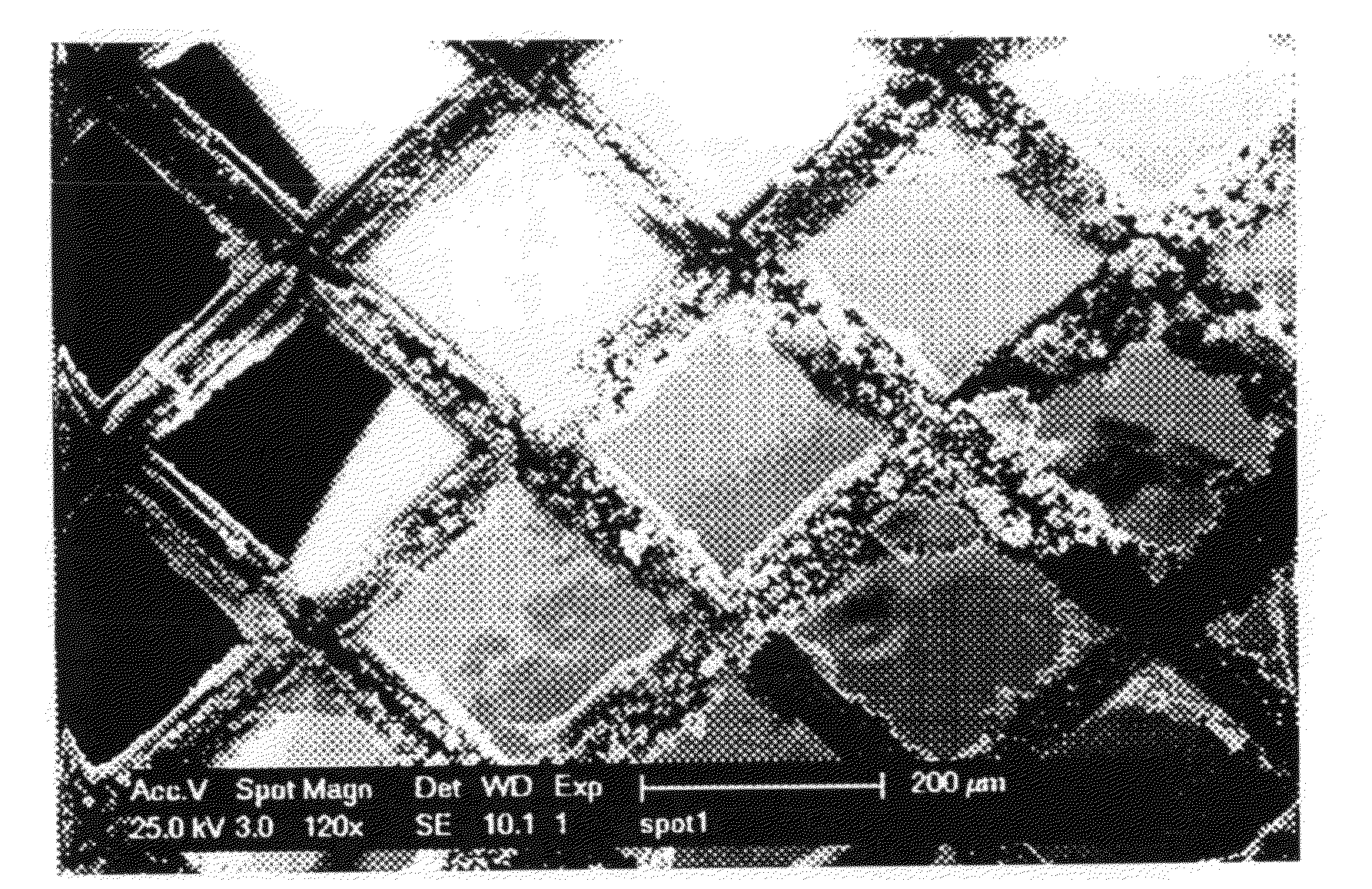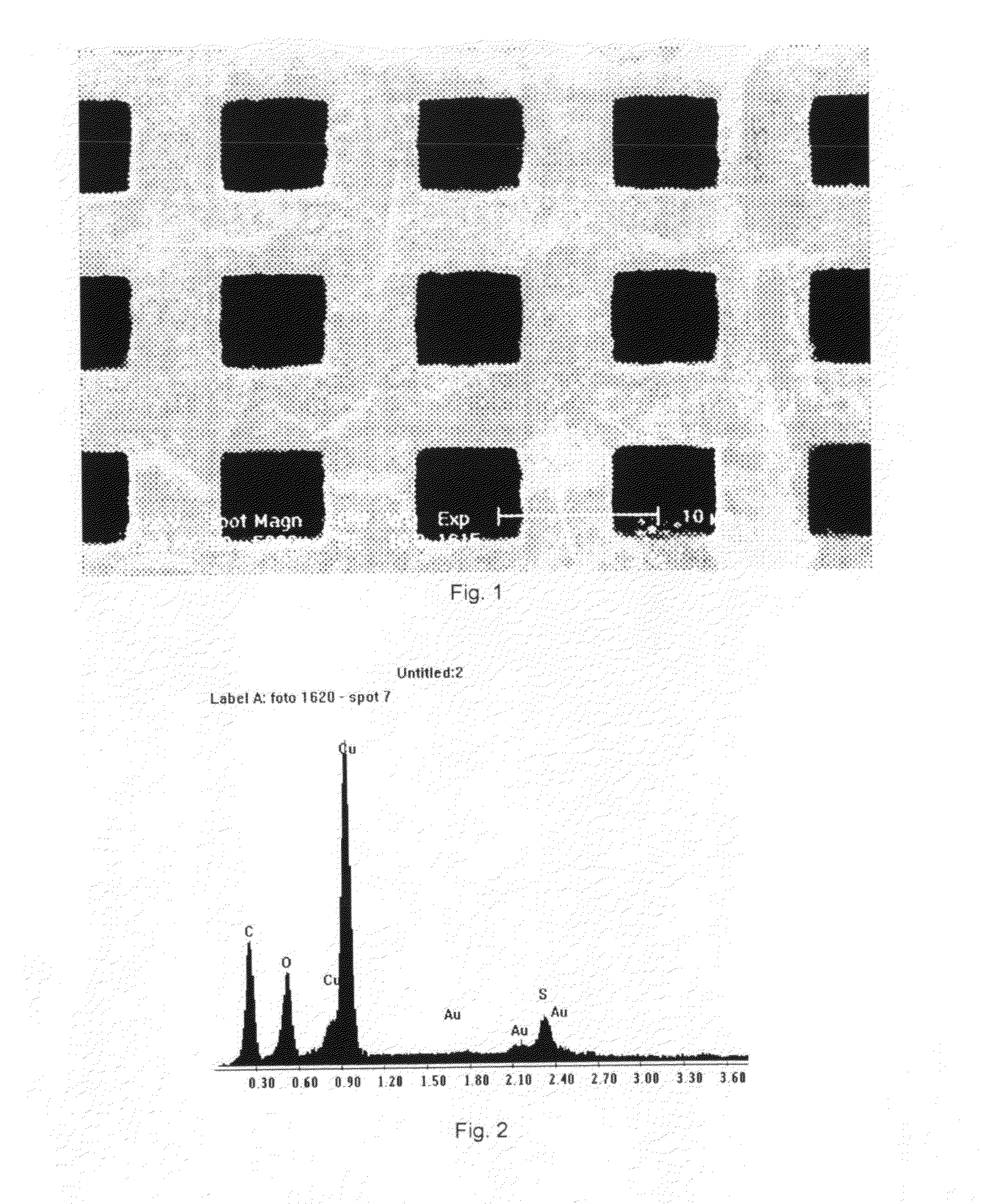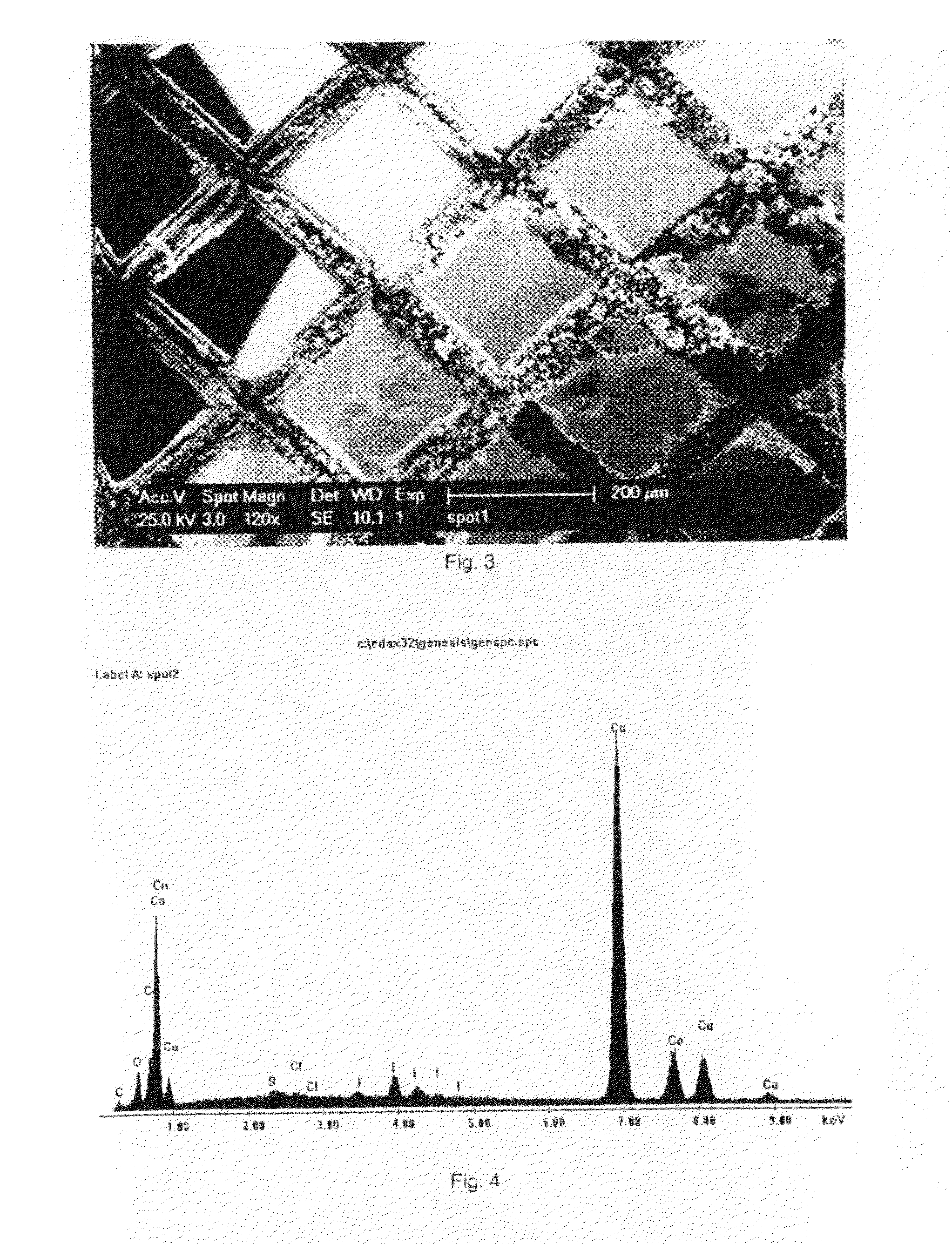Deposition from ionic liquids
a technology of ionic liquid and ionic liquid, which is applied in the direction of liquid/solution decomposition chemical coating, conductive materials, metal/alloy conductors, etc., can solve the problems of affecting the nucleation of copper onto the barrier layer, affecting and affecting etc., to achieve the effect of improving the solubility of source materials and improving the nucleation density of depositing materials
- Summary
- Abstract
- Description
- Claims
- Application Information
AI Technical Summary
Benefits of technology
Problems solved by technology
Method used
Image
Examples
example 2
[0043]Deposits of cobalt were made in low vacuum using the e-SEM. The pressure was 3 torr of N2 and the acceleration voltage 25 kV. The substrate was a copper grid, whose pores are 200 micron wide. The solution that was used was 1-butyl-1-methylpyrrolidinium bis(trifluoromethylsulfonyl)imide in which 0.1 mol dm−3 of anhydrous Col2 was dissolved. Before use, this solution was dried at 120° C. under reduced pressure. The solution was contained in a copper crucible, in which a layer of cobalt had been electrodeposited from an aqueous CoCl2 bath, and this crucible served as counter electrode. It was heated by a Peltier element to about 90° C. A voltage of −3.00 V was hold between the working and counter electrode for about 2 hours. No reference electrode was used. After the deposition, dendritic cobalt deposits could be seen on the copper substrate (FIG. 3). The EDX analysis after placing the grid in acetone overnight to dissolve the ionic liquid and any adhering resin shows a very dist...
example 3
[0044]Cobalt was deposited in high vacuum on a Cu grid with 200 micron wide pores. The plating bath was [BMP][Tf2N] in which 0.2 mol dm−3 Co(Tf2N)2 was dissolved. Before use, the plating solution was placed inside a vacuum chamber and the pressure was reduced to 2 10−6 mbar. Next, the solution was placed inside the e-SEM and the pressure was reduced to 1 10−4 mbar. During the electrodeposition process, the pressure dropped further to 5.4 10−6 mbar. The plating solution was held in a copper crucible that was heated to 90° C. This crucible also served as counter electrode, no reference electrode was used. A voltage of 2 V was applied between the anode and cathode. After 90 minutes, a deposit had formed on the Cu-grid (FIG. 5). The EDX analysis after placing the grid in acetone overnight to dissolve the ionic liquid shows clear cobalt peaks (FIG. 6).
example 4
[0045]Copper was deposited in high vacuum on a Au grid with pore sizes of 7.5 micron wide. The plating bath was 1-butyl-1-methylpyrrolidinium bis(trifluoromethylsulfonyl)imide in which 0.2 mol dm−3 of copper bis(trifluoromethylsulfonyl)imide was dissolved. Before use, the plating solution was placed inside a vacuum chamber and the pressure was reduced to 2 10−6 mbar. Next, the solution was placed inside the e-SEM and the pressure was reduced to 1 10−4 mbar. During the electrodeposition process, the pressure dropped further to 2 10−6 mbar. The plating solution was held in a copper crucible that was heated to 90° C. This crucible also served as counter electrode, no reference electrode was used. A voltage of 2 V was applied between the anode and cathode. After 3 hours, a smooth deposit had formed (FIG. 7). The EDX analysis after placing the grid in acetone overnight to dissolve the ionic liquid shows a clear copper peak (FIG. 8).
PUM
| Property | Measurement | Unit |
|---|---|---|
| atmospheric pressure | aaaaa | aaaaa |
| pressure | aaaaa | aaaaa |
| vapour pressure | aaaaa | aaaaa |
Abstract
Description
Claims
Application Information
 Login to View More
Login to View More - R&D
- Intellectual Property
- Life Sciences
- Materials
- Tech Scout
- Unparalleled Data Quality
- Higher Quality Content
- 60% Fewer Hallucinations
Browse by: Latest US Patents, China's latest patents, Technical Efficacy Thesaurus, Application Domain, Technology Topic, Popular Technical Reports.
© 2025 PatSnap. All rights reserved.Legal|Privacy policy|Modern Slavery Act Transparency Statement|Sitemap|About US| Contact US: help@patsnap.com



